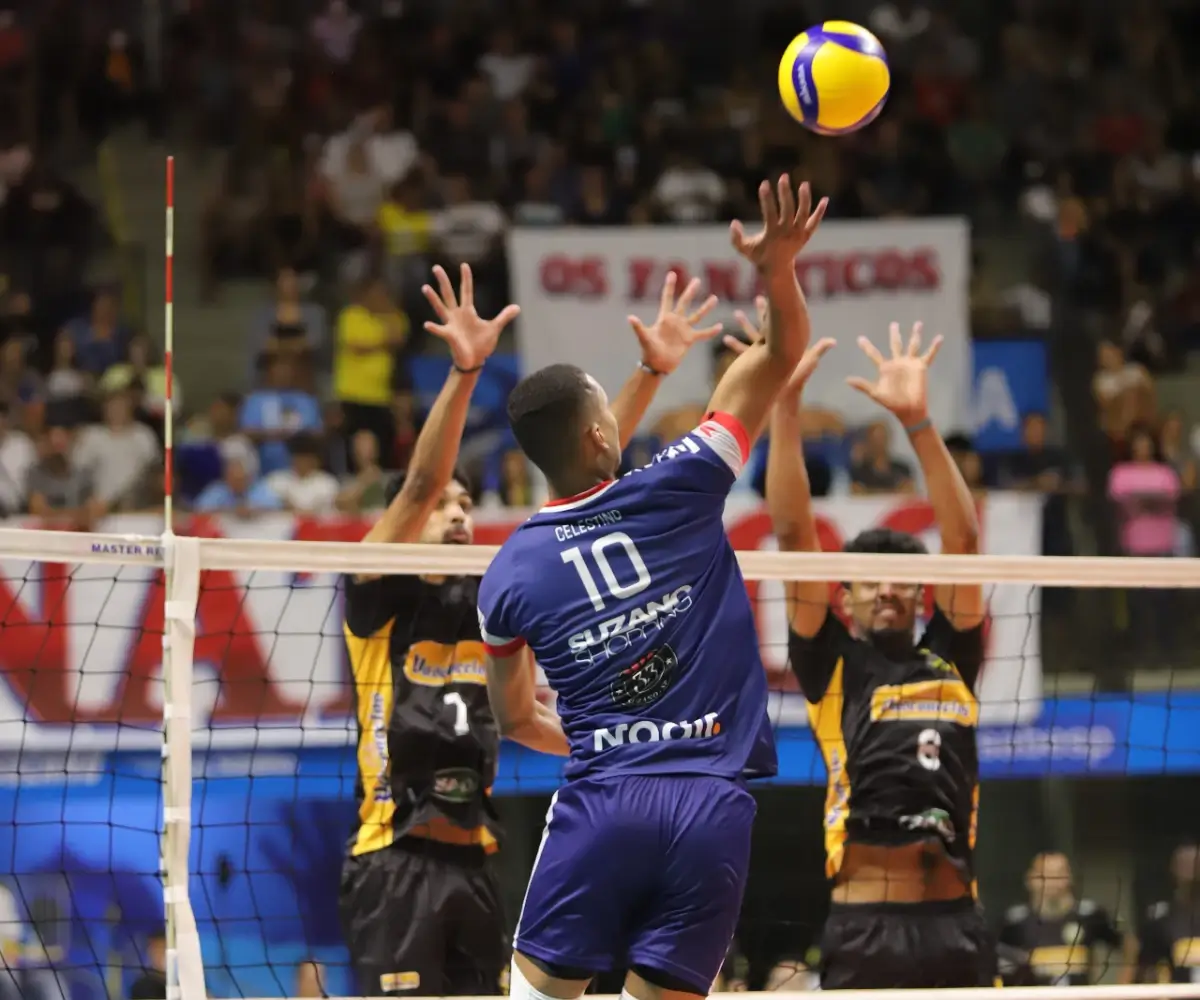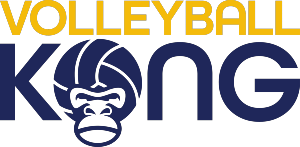Last Updated: January 12, 2024
At an elite volleyball level, you should be training to boost your jump height for improving your spiking skills. From blocking to attacking, a higher vertical leap can be helpful in all aspects of the game, especially if you are not a tall player.
The good news is that it’s still possible to be a remarkable hitter with your height not being in your favor.
Here are some training secrets to enhance your vertical jumping height and ultimately take your volleyball spiking skills to the next level.
Training Exercises to Boost Your Vertical Jump for Better Spikes

Leg Training
By focusing on the muscles involved in jumping, you can jump more powerfully than before. A structured strength training program can do a world of good to improve your vertical leap, leading to better volleyball spikes during matches.
Exercises like squats and lunges mimic the jumping motion. Therefore, it makes sense to include them in your training regime along with other leg strengthening exercises like deadlift, leg press, leg curl, glute bridge, hip thrust, and cable kickbacks.
You can perform these exercises three times a week to progress toward a higher vertical leap. That said, it’s important that you get your exercise form evaluated by an expert to minimize the chances of injury. You can gradually increase the resistance as your strength and technique improves.
Core Training
When aiming to improve your vertical jump, core training cannot be undermined. Our core muscles play a great role in stabilizing and balancing our body during a vertical leap. In fact, a stronger core results in better athletic performance in any sport, including volleyball.
The best part is that most core exercises can be done without equipment. Exercises like planks, crunches, hanging leg raises, Russian twists, cable woodchops, dead bugs, flutter kicks, and V-Ups can help strengthen different areas of your core, enhancing your jumping ability in the process.
Recommended read: Spiking from All Angles – Techniques for Cross-Court, Line Shots, and Strategic Attack Placement
That said, you need to make sure that you are not jerking your lower back when performing any movement. If core exercises are performed incorrectly, they can do more harm than good. So, be careful and train them efficiently rather than rushing through the repetitions.
Focusing on the Hip Flexors
Hip flexors play a vital role in the mechanics of a vertical jump. At the start of your jump, your hip flexors contract to elevate your knees from the ground toward the chest area. It has been observed that those with weak hip flexors often jump to a reduced height due to suboptimal jump mechanics.
So, your hip flexors need to be strong and flexible to boost your vertical leap. While many volleyball players train their quads, hamstrings, and glutes, they often neglect their hip flexors, which results in suboptimal jump height. Ideally, you should stretch and even strengthen your hip flexors.
Speaking of hip flexor exercises, you should perform static stretches like kneeling hip flexor stretching to improve the flexibility of your hip flexor muscles, especially the psoas major (1) muscles. Additionally, you must do strength training exercises like split squats, jump lunges or resistant band leg pulls to make your hip flexors strong (2).
Focusing on your Calf Muscles
Our calf muscles are highly engaged during a vertical jump. Therefore, it’s logical to give them due attention. However, volleyball players usually don’t train them optimally. Most train them as an afterthought, resulting in less force production when propelling from the ground.
The speed and force with which our calf muscles contract directly influence our take-off during a jump. Less developed calf muscles result in reduced capacity to generate upward force from the ground. Because calf muscles are repetitively used during volleyball, strengthening them also minimizes injury risk.
Novices in strength training can start their calf exercises by performing bodyweight calf raises. They can then graduate to standing machine calf raises and seated calf raises. The standing machine calf raises will bias the gastrocnemius muscles more. On the other hand, the seated calf raises will bias the soleus muscles more, leading to overall calf muscle development.
Focusing on your Tibialis Anterior Muscles
For those who don’t know, the tibialis anterior muscles are located on the front of our legs (opposite to the calf muscles). They do not have as much growth potential as our calf muscles, but they still need to be trained to develop lower limb strength and to keep ankle and knee injuries at bay.
When landing from the jump, they absorb the shock from the ground. The tibialis anterior also helps in generating upward force when jumping. Therefore, strengthening them can help one achieve proper take-off and landing positions during a vertical leap.
The primary role of this muscle is to perform dorsiflexion, which involves raising our toes as close to our shin as possible. Therefore, bodyweight toe raises can be performed to train our tibialis anterior muscles. If your gym has a toe raise machine, feel free to use it to train the tibialis anterior muscle.
Focusing on your Arm Muscles
Even though we rely primarily on our lower body muscles to generate explosive power for a vertical leap, our arm strength also influences the height of the jump because the mechanics of a jump involve our arms as well. During a vertical leap, we swing our arms in coordination with our lower body to create an upward momentum to explode off the ground.
There are many arm workouts you can do to improve your arm strength. When training your arms, you must focus on your biceps, triceps, and forearms. Exercises like bicep curls, hammer curls, triceps pushdowns, overhead triceps extension, close grip bench presses, wrist curls, reverse wrist curls, and wrist roller can be done with good technique to grow the muscles of your arms.
Also read: How to Read the Defense and Choose the Right Moments to Attack
The best part is that most arm exercises can be done without gym equipment. Our muscles are blind. They respond solely to the resistance applied to them, whether it comes from any gym equipment or a luggage bag. Muscle growth will be initiated if the external resistance offers a significant challenge, regardless of the tool you use.
Explosive Exercises
Nothing beats explosive exercises for vertical leap enhancement because they help you explode off the ground quickly. In other words, explosive exercises enhance the qualities required to generate maximum force off the ground at short notice.
Explosive exercises like box jumps, tuck jumps, quarter squats, step-ups, medicine ball throws, power cleans, and power snatches can improve vertical leaps. One can also include volleyball-centered plyometric drills (3) to optimize the synchronization of the muscles involved in a jump.
Perform at least some of the exercises individually, one leg at a time. This will help fix any muscle imbalances, enabling you to improve your overall jump performance because when one leg is stronger, it limits symmetrical force production. Unilateral training can also help prevent injuries caused by muscle imbalances.
Using Jump Rope
Even though jump rope may not be the sole contributor to improving your jump height, it can help immensely in the process by addressing various aspects of the jump. From enhancing balance, coordination, jump approach timing, and leg strength, it works on all the critical components required to improve one’s vertical leap.
The best part is that jump rope also helps explode off the ground rapidly by conditioning all the muscles involved in force production. Basically, jump rope training develops lower body explosiveness by quickly contracting all the muscles engaged in jumping.
Consequently, you will notice an improvement in your ability to generate explosive force and sustain the explosiveness for a long duration, which can be immensely helpful during different game situations in volleyball.
Stretching Exercises
Stretching focuses primarily on enhancing your mobility and flexibility, which in turn increases your range of motion and contributes to improved jumping performance on the volleyball court. You should do both dynamic and static stretching exercises to derive the best benefits from a stretching routine.
Dynamic stretching exercises should be done before the practice session to prepare your muscles for all the movements on the court. Examples of dynamic stretching exercises include arm swing, leg swing (front to back and side to side), hip circles, ankle circles, wrist circles, and butt kicks.
Static stretches can be a part of your cool-down routine, aiming to stretch the muscles trained in the practice session. Examples of static stretching exercises include hamstring stretch, quad stretch, calf stretch, groin stretch, shoulder stretch, triceps stretch, bicep stretch, lats stretch, chest and shoulder stretch. You can hold per stretch for 15-30 seconds.
Foam Rolling
Although foam rolling may not directly improve your vertical jump height, it should be a part of your overall training plan for vertical jump enhancement. Combining foam rolling with other things will provide you with the best vertical leap results.
Foam rolling can make many contributions to enhance your vertical leap, such as improving your range of motion, increasing blood flow, speeding up the recovery process, providing relief from tight muscles, and even reducing pain and discomfort, eventually allowing you to jump higher than before.
Proper Diet and Rest
Finally, you should also take care of your nutrition to ensure that your body is adequately fueled to support your vertical leap enhancement training. After all, your diet will play a significant role in your body’s recovery process. A balanced diet will also help you maintain good energy levels. You should have a balanced meal of protein, carbs, dietary fat, and fiber.
Equal importance should be placed on rest too. To maintain your peak performance during training, it’s essential that you get sufficient rest. Failing to rest enough increases the risk of overtraining, which can lead to diminishing returns. Therefore, do not underestimate the significance of both your diet and rest. They should complement your training endeavors.
Ideally, your goal should be to get 7-9 hours of sleep to facilitate the body’s repair and growth processes triggered through training. On rest days, consider engaging in low-intensity activities such as walking or leisure cycling. Avoid exerting yourself too much during these days, as it could potentially impede your recovery.
Related: Common Spiking Mistakes to Avoid and How to Correct Them for Optimal Performance
Track your Progress
To evaluate your jumping progress:
- Stand next to a wall and jump as high as possible with a post-it note in your hand.
- Once you execute a vertical leap, paste the note on the wall at the highest point of your jump.
- Once you measure your jump height, keep assessing your jump height every two to three weeks to track your progress.
Conclusion
The bulk of your volleyball success will come from improving your volleyball skills. And improving your vertical jump height can do wonders not only for finding your unique hitting style and ability to execute powerful spikes, but also for your all-round game. It’s definitely worth putting in the effort.
